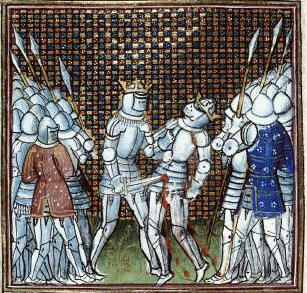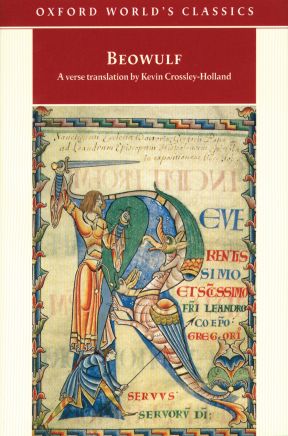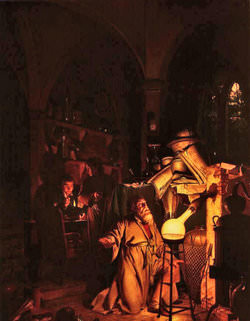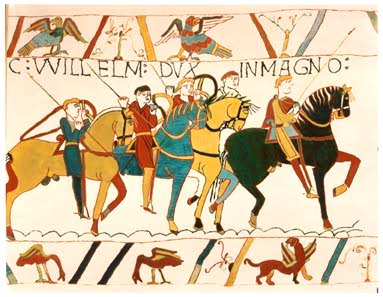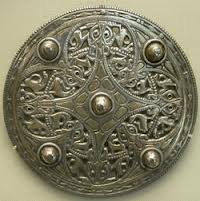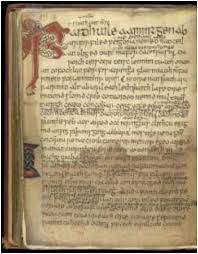Old Norse Ship Names and Ship Terms
The nautical language of the North Sea Germanic area is a very elaborate and rich terminology. This was no less true at the time I am dealing with, namely the period from the Viking Age up to about 1400 A.D.
Science and the Future of the Human Past
Michael McCormick discusses how we can discover our ancestors and their lived experience, their successes and failures, and invent a new discipline, the Science of the Human Past.
The emergence and transformation of medieval Cumbria
The Cumbrian kingdom is one of the more shadowy polities of early medieval northern Britain. Our understanding of the kingdom’s history is hampered by the patchiness of the source material, and the few texts that shed light on the region have proved difficult to interpret.
What’s in a Name?: Reflections on, and Echoes of, the Reign of Pedro I of Castile
There has been only one Pedro, Pedro I of Castile. This was no accidental oversight. The circumstances of his reign, and the passions and animosities he unleashed, assured that his name and memory would not be honored, sparing future monarchs of the taint of Pedro’s tumultuous reign.
Cultural Exchange in the Languages and Literatures of Medieval Spain
Professor David Wacks’s fascinating discussion of the Iberian Peninsula and it’s incredible linguistic heritage.
‘Falseness Reigns in Every Flock’: Literacy and Eschatological Discourse in the Peasants’ Revolt of 1381
The literature of the Peasants’ Revolt of 1381, a miscellany of fourteenth-century poetry and prose penned before, during, and after the insurrection, often stresses the importance of literacy to the nonaristocratic population of England.
Race, Periodicity, and the (Neo-) Middle Ages
My goal is to intervene in ongoing discussions of race and periodicity, particularly vis-à-vis medieval culture, in order to investigate the informing role of the medieval and more particularly of medievalisms in the construction, representation, and perpetuation of modern racisms.
‘That melodious linguist’: Birds in Medieval Christian and Islamic Cosmography
“Birds,” writes Albertus Magnus, “generally call more than other animals. This is due to the lightness of their spirits.”
Island Words, Island Worlds: The Origins and Meanings of Words for ‘Islands’ in North-West Europe
This paper proposes the notion that words mirror ideas, perspectives and world- views. Etymologies and meanings of general words for ‘islands’ in a number of languages in North and West Europe are then discussed.
The Anglo-Saxon Name for the s-Rune: Sigel, a Precious Jewel
The Anglo-Saxon rune-name sigel has been interpreted as meaning ‘sun’. In some contexts Old English sigel does refer to the sun, in others it means ‘clasp’, ‘brooch’, or ‘jewel’. All these meanings, however, are difficult to reconcile with the maritime imagery of the Anglo-Saxon Rune Poem’s sigel stanza.
Is the Author Really Better than his Scribes? Problems of Editing Pre-Carolingian Latin Texts
Latin texts composed after ca. 600 and before the Carolingian writing re- forms that began in the late eighth century present problems that editors rarely have to face when working on classical texts (including most writings of late antiquity), or texts written after ca. 800.
The King’s Table: A Semiotic Analysis of a Medieval Noble Banquet
During the Middle Ages, aristocratic banquets were common and often grandiose affairs. The function of a banquet went beyond mere celebration of an event or holiday and became a tool for demonstrating a person’s wealth, influence, piety, and generosity.
When Latin gets sick: mocking medical language in macaronic poetry
Since, at the time of the rise of macaronic poetry, Latin was the language of learn- ing, including medicine, it is expected that an analysis of the Latin in macaronic poetry and its interaction with other linguistic varieties in the same, can reveal changes in the relative social position of various groups.
The Final Countdown: A Historiographical Analysis on Language in the Year 1000 A.D.
We must now begin to ask ourselves what led to this increase in millenarian belief that the world would end between either 1000-1033 A.D.; 1033 being the 1000th year anniversary of the death of Christ. From the evidence provided in the first hand accounts of religious figures in the early eleventh century, it can be argued that this millenarian idea was not uncommon throughout Europe.
Lexical imposition Old Norse vocabulary in Scottish Gaelic
Although few specifics are known about the historical daily patterns of interaction between ON speakers and Gaelic speakers in the Highlands and Western/Hebrides Islands of what is present-day Scotland, it is clear neverthe- less that the groups lived more or less side by side in that region over a period of several centuries.
The case for a West Saxon minuscule
Julian Brown’s famous analysis of what he termed the Insular system of scripts marked out a number of routes, now well trodden, through the debris of undated and unlocalized manuscript material from the pre-Viking-Age British Isles.
Beowulf Is Not God Cyning
By understanding the etymology of the Old English cyning, and by recognizing the poet’s use of Scyld as the model for a good king, we can see that each of the three uses of the phrase ‘Þæt wæs god cyning’ has a different meaning…
Visualization in Medieval Alchemy
Therefore, rather than attempting to establish an exhaustive inventory of visual forms in medieval alchemy or a premature synthesis, the purpose of this article is to sketch major trends in visualization and to exemplify them by their earliest appearance so far known.
Why There May Have Been Contacts between Slovenes and Jews before 1000 A.D.
The first documented evidence of a Jewish presence in Slovenia dates from the 13th century, when Yiddish- and Italian-speaking Jews migrated south from Austria to Maribor and Celje, and east from Italy into Ljubljana. This is a good three centuries after the first mention of Jews in the Austrian lands.
Conquest, Contact, and Convention: Simulating the Norman Invasion’s Impact on Linguistic Usage
How do conventions arise? Lewis adressed this in his work Convention via signaling games, a mathematical model of communication where a sender sends a message to a receiver who then interprets it. When we say conventions, we mean by that a system of coor- dinated behavior pairing information states with actions
The British Kingdom of Lindsey
The first piece of evidence which offers support for the above contention comes from the kingdom-name ‘Lindsey’ itself. Two forms of this name exist in Anglo-Saxon sources, reflecting two different Old English suffixes:6 Lindissi (later Lindesse, as used by Bede and the earliest manuscripts of the Anglo-Saxon Chronicle)7 and Lindesig…
The Scandinavian element beyond the Danelaw
The present paper concentrates on the Scandinavian element present in Eng- lish in the area beyond the Danelaw, i.e. in the West Midlands and Southern parts of the country.
The Development of Predicative Possession in Slavic Languages
As an active language, Early Proto-Indo-European (Pre-Indo-Euro- pean) had no category of syntactic transitivity (Subject-Object relation), which is the central characteristic of nominative (accusative) languages, and no verb ‘have’.
A Christological reading of The Ruin
We should be aware that the semantic scope of each word may vary drastically and that the reader is influenced by many variables in attaching the meaning to a given word. The question becomes trickier if we take the allegorical viewpoint, because polysemy is concerned with the entire text, not with just a word. Thus, we should not consider the surface meaning of the words, but look more carefully for the covert meanings.
Property Rights in Celtic Irish Law
Unfortunately, many historians not specializing in the study of the ancient Irish law tracts have been unaware of the textual inaccuracies of the O’Curry – O’Donovan translations and have continued to incorporate their older unscientific work, and that of their editors, into their own work.



